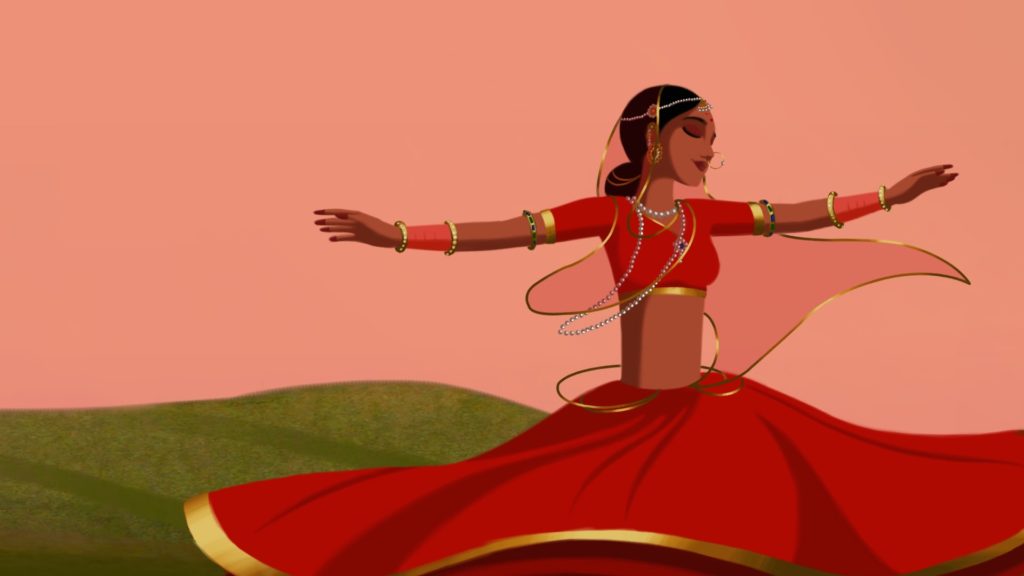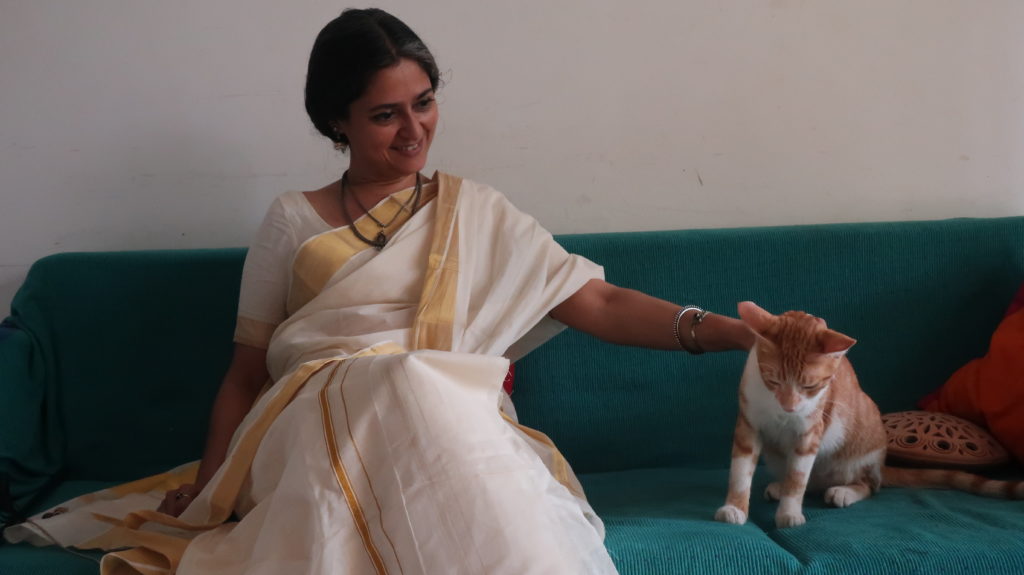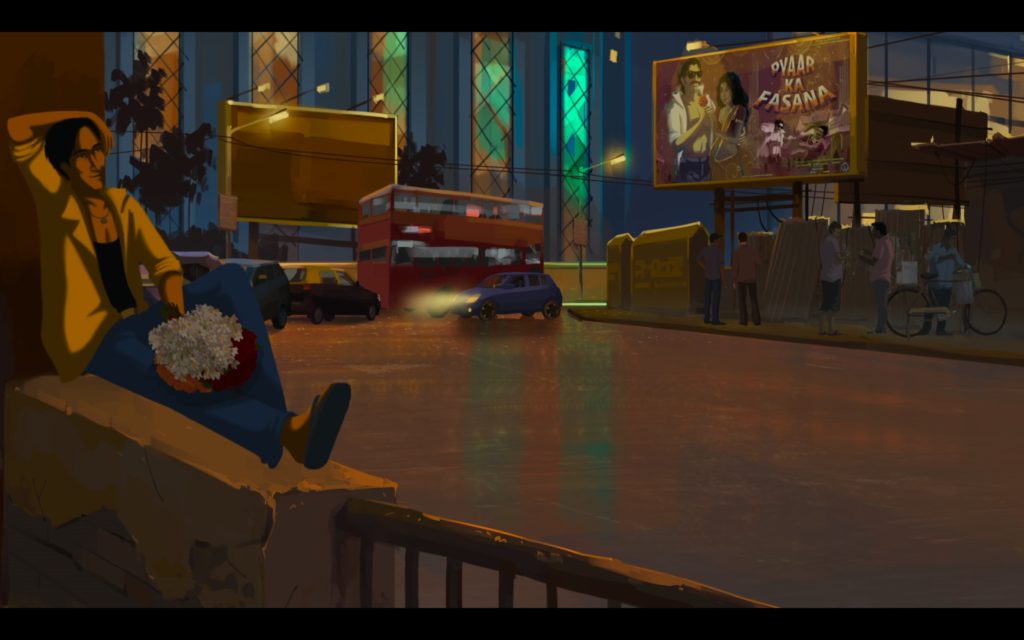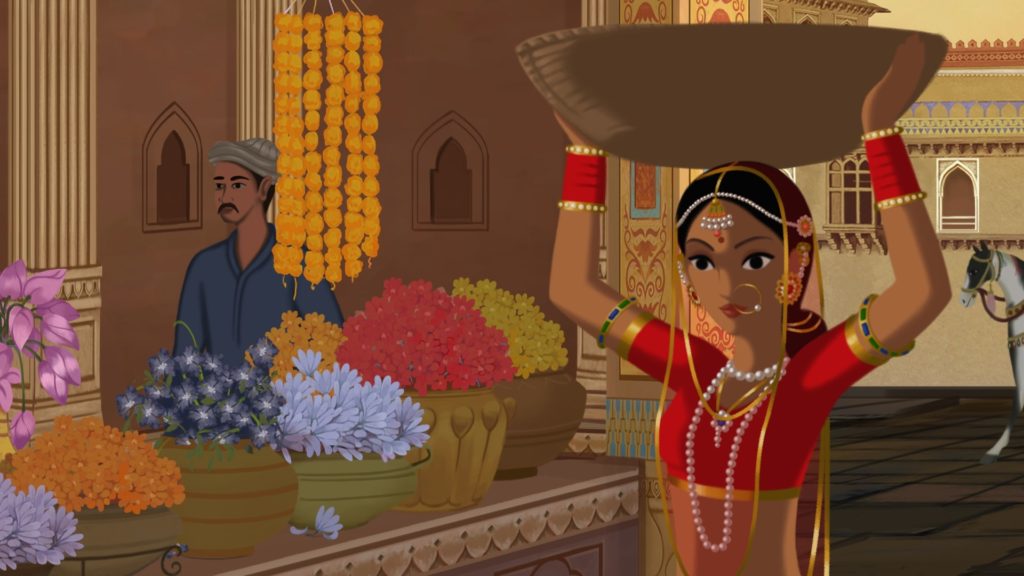Gitanjali Rao is an Indian theatre actress, animator and filmmaker. A self-taught animator and filmmaker, she emerged onto the international stage with her brilliantly animated and deeply sensitive short film, ‘Printed Rainbow’, which premiered in Cannes Critic’s week 2006 (Kodak Discovery Award, Petite Rail D’Or, Prix Du Jeune). The film went on to win 25 awards and was shortlisted for the Oscar in 2008. Her four independently produced animated shorts have been to over 150 international film festivals and received more than 30 awards. They have been showcased in international art biennales in India, Poland and USA.
Painted frame by frame, Gitanjali’s films travel seamlessly between harsh urban reality and the dream world created by the psyche, to escape that reality. While her depiction of urban reality has a documentary style, the intricate dream worlds are inspired from the rich and varied folk art styles of India. Her body of work includes animated commercials, pre-production for animated features, logo-motions, as well as graphic novels and illustrated stories. She is also an award-winning actor on stage and in films. ‘Bombay Rose’, a labour of love made over six years, is her debut feature. It is being showcased as the inaugural critic’s film in the Venice Film Festival on August 28. Then the film travels to the Toronto Film Festival and other locations across the globe.

Your brilliant, award-winning and offbeat films have been showcased and appreciated all over prestigious international film festivals in the past. ‘Bombay Rose’ making it to the inaugural critics’ side-bar section of the Venice Film Festival, a great honour, indeed, seems part of the illustrious trajectory of a certain genre of great cinema you have created. Surely, as you have stated elsewhere, there are lineages and narratives from your past work which also reflects in the film made after some years of hard, painstaking work. So ‘Bombay Rose’ is original and yet belongs to images and memories of the past, is it?
Yes. The first time I got down the idea to paper was in 2009 when I started work on the film ‘Girgit’. Due to lack of funds, we had to halt that film in six months. Since I did not get paid, I walked away with the idea and characters and developed it over the years into what is now ‘Bombay Rose’. The stories of the characters, Kamala and Salim, changed over time, but their basic nature, their identity and their soul, remained the same. I sometimes joke that Kamala and Salim are terrific actors and since ‘Girgit’ they are awaiting their big break in Bollywood, so I owe them ‘Bombay Rose’. My characters in all my films traverse from the present to their past (real or imaginary) and this I do best through animated imagery.
Was it only financial constraints which compelled you to drop your films half-way– films which could have been great cinema if fully completed? Reminds me of the incomplete films of Ritwick Ghatak –which are still great, even if incomplete…
Yes, it was always finances. Although, I am not sure if it would make great cinema. No one will ever know because those are stuck with the financiers through copyright contracts. Ghatak may never have had to face corporate villainy as we do now. As I mentioned with ‘Girgit‘, I did not get paid so could walk away with the idea, but I also worked on a feature script with Disney India where I got paid but they had no intention to make the film so it remains shelved. No one will ever get to read it. That’s how corporates work. Also, in animation, the costs of paying artists for years together to make a single film are so high that one cannot do it with one’s own money. Shorts is possible. Not features.
Why did you choose the archival and popular name of the city: Bombay? It’s like nostalgic Bengalis still insisting to call Kolkata — Calcutta, including a top daily English newspaper in Bengal. Besides, why Bombay Rose? Why not, for instance, Bombay Jasmine?
Bombay, because I was born in Bombay, studied in Bombay, went to art school in Bombay, and suddenly some bunch of politicians come along and in a bid to erase its history, change its name. Calling it Mumbai after 30 years of calling it Bombay would be doing a disservice to history. I always call it Mumbai in Marathi and Bambai in Hindi and therefore Bombay in English.
What starts unconsciously as fondness for flowers in a Bombayite is the simple need to escape from the smell. The smell of sweat of bodies pressed together in local trains, buses, then the smell of the overflowing gutters, Mahim creek, rotting fish, dead animal carcasses. A simple jasmine gajara purchased form young girls before boarding that local train could change your day.
Rose and not jasmine, because, in the film, we travel through the eyes of a rose that is grown by a lover for a dead loved one to put on the grave, but is stolen by another lover to gift to his beloved who is alive. I bring together these love stories through the point of view of the rose.

The film stars flowers as a key protagonist. The main poster has a red-pink rose like a childhood, kitschy, art poster. Why flowers? Is it symbolic tenderness, sensibility, beauty, fragrance, love, intimacy — in a rough city of eternal and infinite struggles, in contrast to the unimaginable and vulgar wealth of a few? A city which celebrates a hard and tough life for most of its citizens, insiders, outsiders, refugees, immigrants, settlers, middle class, daily passengers, the homeless, and so-called original inhabitants? Why flowers?
I could not have said it in better words than yours. Me and my sister Niva, my mother, my maid, most of my women friends, all love gajaras. What starts unconsciously as fondness for flowers in a Bombayite ( I feel) is the simple need to escape from the smell. The smell of sweat of bodies pressed together in local trains, buses, then the smell of the overflowing gutters, Mahim creek, rotting fish, dead animal carcasses on the highways and so many other things. A simple jasmine gajara hurriedly purchased form young girls and kids before boarding that local train could change your day.
Perfumes were an elite concept to us back then. So it stayed with me.
My endings are open. Some people think death is tragic. Others think it is a gateway to a better place. I like to leave my endings open to the audience’s interpretation.
I wanted to know and tell the story of that girl who would string that gajara and change the day for so many people. How would her life that is filled by beautiful smells all the time but also filled with difficult realities of survival get woven together like a gajara. There is even a conversation in my film about Chameli being Hindu and Gulab being Muslim. But then it is broken down with names like Gulab Khan and Gulab Singh to remind the audience that flowers through history have trespassed religion in the most beautiful way possible.
Three characters in ‘Bombay Rose’: one male Kashmiri Muslim with a political backdrop, one young Hindu woman from the central provinces who has escaped child marriage, one Anglo-Indian woman surrounded by the crumbling and addictive nostalgia of Old Bombay. Does their relationship or bonding reflect a bigger and complex picture of endearment, purity and resilience against all odds? Or, is it something so natural and inevitable, like the torrential rain in Bombay every year — another important dimension of the film?
It is both. Before 1992, no one would even notice they are from different religions. Now that same story would mean something special. In an ideal world, it should not be special, but the norm. But the world has moved very far from being ideal in my own lifetime. In today’s world, a picture of a Muslim boy dressed as Krishna sitting on a scooter going to school for a fancy dress competition goes viral. Isn’t it ironic? After centuries of peaceful cohabitation, this?

What is the significance of the banning of dance bars in your film, set in 2005? Surely, it has a significance. Why 2005? Why not, for instance, 1992-93, the winter of organised State-sponsored killings in Bombay? Have the wounds healed in Bombay? Or, do the memories still hide in dark alleys of the mind?
I used that ban on dance bar morality war that began in 2005 as a metaphor for the State interfering in the life of a working woman and telling her that her work was immoral and that she needs to be rescued by the good men of this country, while in actuality rendering 8000 women jobless overnight with a few suicides thrown in. To stress this, it still continues in today’s times and far more intensely. That, I used as a plot point. However, the destruction caused in 1992-93 exists metaphorically throughout my film.
Rose and not jasmine, because, in the film, we travel through the eyes of a rose that is grown by a lover for a dead loved one to put on the grave, but is stolen by another lover to gift to his beloved who is alive. I bring together these love stories through the point of view of the rose.
Why do you choose animation? Why not a ‘normal’ movie?
Animation is normal. It is just not live-action. Live-action would not allow me to go from reality to dream in the way I wish to. Besides, so many great people are making normal movies, why add to that carbon footprint?
Do you believe in happy endings? Can your endings also become beginnings and vice-versa. ‘Printed Rainbow’: Your deeply sensitive work of genius, traveling through an infinite expanse of loneliness and solitude so typically and brutally predictable in a socially alienated metropolis, ends with a tragic ending. There could have been a happy ending too. So, why not?
My endings are open. Some people think death is tragic. Others think it is a gateway to a better place. I like to leave my endings open to the audience’s interpretation.

Does ‘Bombay Rose’ have a happy ending?
That too would depend on your interpretation! On who you are, what you are feeling and what remains with you after watching the film.
Animated filmAnimationBombay RoseGitanjali RaoMumbaiShort film